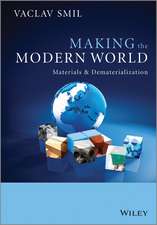The Physical and Mathematical Modeling of Tundish Operations: Materials Research and Engineering
Autor Julian Szekely, Olusegun J. Ilegbusien Limba Engleză Paperback – 14 dec 2011
Preț: 379.30 lei
Nou
Puncte Express: 569
Preț estimativ în valută:
72.60€ • 78.89$ • 61.03£
72.60€ • 78.89$ • 61.03£
Carte tipărită la comandă
Livrare economică 21 aprilie-05 mai
Preluare comenzi: 021 569.72.76
Specificații
ISBN-13: 9781461396284
ISBN-10: 146139628X
Pagini: 124
Ilustrații: XI, 111 p. 1 illus.
Dimensiuni: 170 x 244 x 7 mm
Greutate: 0.21 kg
Ediția:Softcover reprint of the original 1st ed. 1989
Editura: Springer
Colecția Springer
Seria Materials Research and Engineering
Locul publicării:New York, NY, United States
ISBN-10: 146139628X
Pagini: 124
Ilustrații: XI, 111 p. 1 illus.
Dimensiuni: 170 x 244 x 7 mm
Greutate: 0.21 kg
Ediția:Softcover reprint of the original 1st ed. 1989
Editura: Springer
Colecția Springer
Seria Materials Research and Engineering
Locul publicării:New York, NY, United States
Public țintă
ResearchCuprins
1 Introduction.- 1.1 Introduction.- 1.2 Flotation of Inclusions.- 1.3 Vortexing.- 1.4 Flow Instabilities and Wave Formation.- 1.5 Tundish Metallurgy and Tundish Heating.- References.- 2 Review of Fluid Mechanics Fundamentals.- 2.1 Fluid Flow Regimes: Laminar and Turbulent Flows.- 2.2 The Implication of Fluid Flow Fundamentals to Tundish Design and Operation.- 2.3 Concluding Remarks.- 2.4 Summation.- References.- 3 The Physical Modeling of Tundish Systems.- 3.1 The Principles of Physical Modeling.- 3.2 Continuous Flow Systems and Tracer Studies.- 3.3 Summation.- References.- 4 Computed Results on Tundish Systems.- 4.1 General Formulation of Flow Phenomena in Tundishes.- 4.2 Conventional Tundishes: Fluid Flow, Tracer Dispersion, and Inclusion Behavior.- 4.3 Conventional Tundishes: Heat Transfer.- 4.4 Magnetic Flow Control in Tundishes.- 4.5 Shallow Tundish Behavior.- 4.6 Free Surface Phenomena and Wave Formation.- References.- 5 Concluding Remarks.- 5.1 Main Findings.- 5.2 Strategy for Optimal Tundish Design.

























